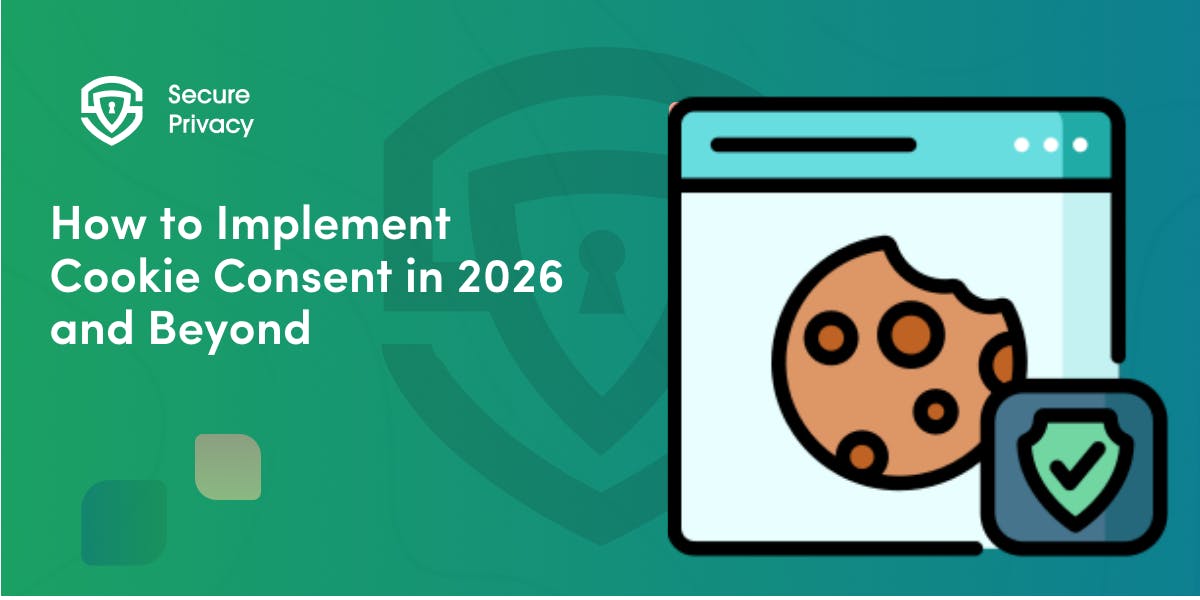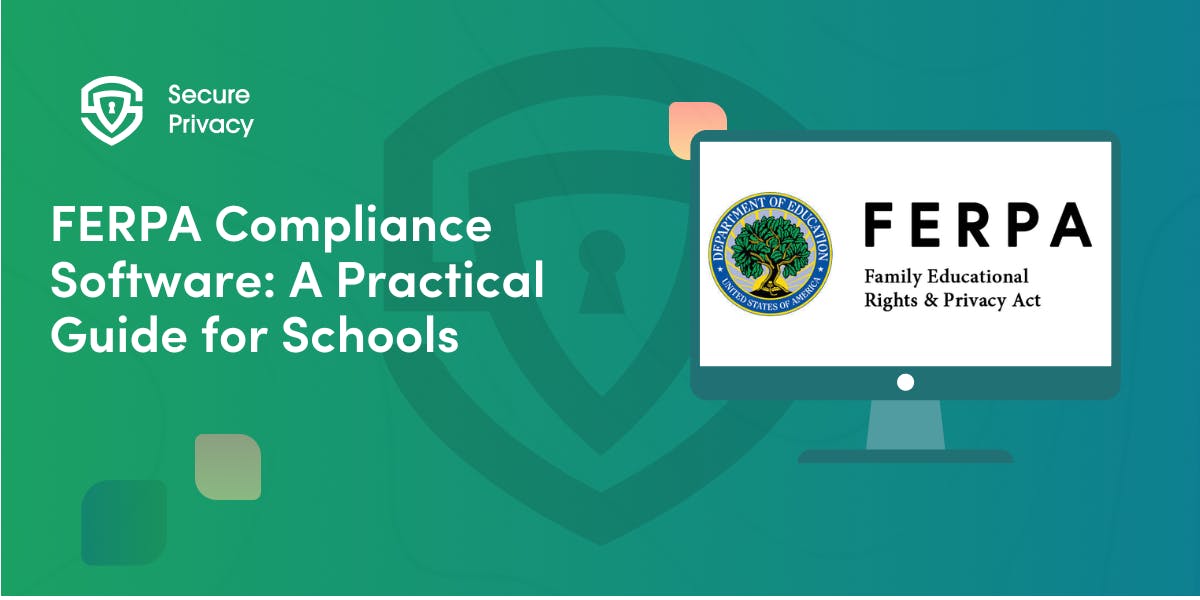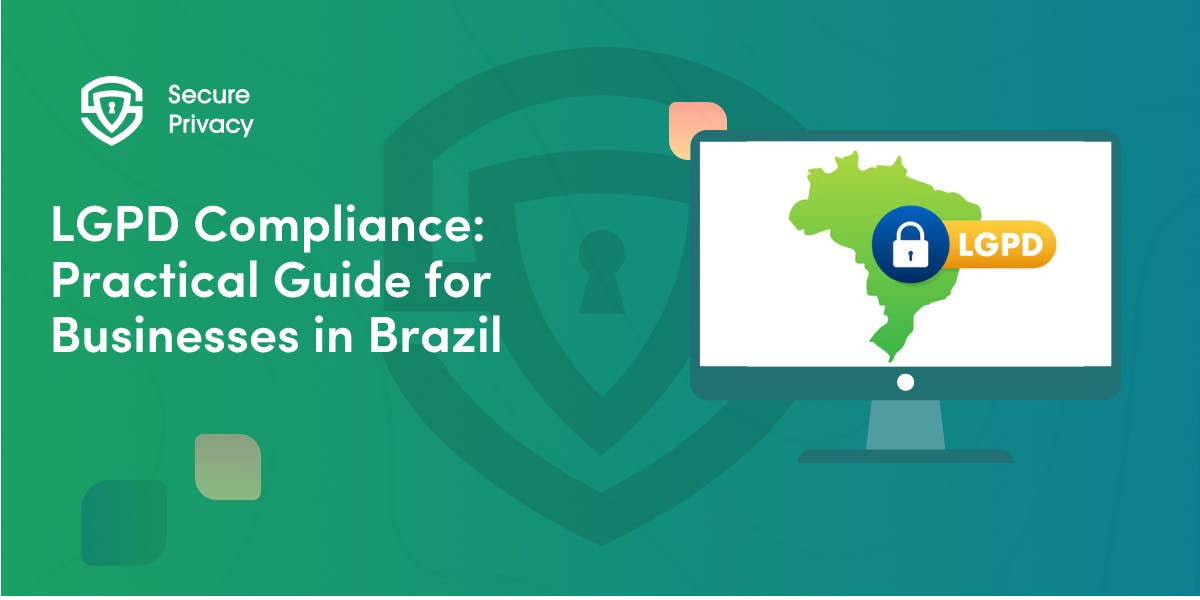Cookie Consent Banners: 10 Examples + Design Best Practices That Actually Work
If engagement is down, your cookie consent banners might be part of the problem.
Some banners are silent killers of trust. They annoy users, confuse them, or slow down your site. Others make cookie compliance easy — and even improve the user experience.
In this guide, we’ll show you how to avoid the former and aim for the latter. We’ll cover design patterns, regional differences, legal must-haves, and 10 cookie banner examples that strike the right balance between compliance and usability. Plus: a checklist for performance, accessibility, and user experience.
Why Cookie Consent Banners Matter
Your cookie consent banners aren’t just a legal checkbox. They’re one of the first things users see—and one of the first moments where trust can be won or lost.
Done right, cookie consent banners:
- Comply with laws like GDPR and CCPA
- Build user trust through transparency
- Minimize friction with good UX
- Reduce bounce rates and improve performance
- Help preserve brand reputation by demonstrating respect for privacy
Done poorly, they:
- Break legal compliance
- Interrupt user flow
- Confuse or annoy visitors
- Collect invalid consent, which is as bad as no consent
- Lead to lower engagement and trust metrics over time
Poorly executed banners create a lose-lose scenario: users get frustrated, and your business risks non-compliance. The goal is not just to “get consent”—it’s to respect the user while meeting your legal obligations.
When you get it right, you don’t just avoid penalties. You create a fast, respectful user experience that builds long-term trust and engagement.
Legal Requirements: GDPR vs. CCPA Consent Banners
While the GDPR and CCPA share common goals — user choice and transparency — they differ in execution. Understanding the distinction is key to building region-specific banners.
GDPR Banner Best Practices
Under GDPR:
- Consent must be freely given, specific, informed, and unambiguous
- No pre-ticked boxes
- Users must be able to reject non-essential cookies as easily as they accept
- Consent must be logged and auditable
- Language should be clear, not legalistic
This means GDPR banner best practices demand that you include clear options, no dark patterns, and the ability to change preferences later. Your banner must not simply inform — it must invite meaningful, voluntary interaction.
Remember: invalid consent is legally equivalent to no consent at all. That’s why getting your GDPR banner right is critical.
CCPA Consent Banner Tips
Under CCPA:
- You must disclose the use of cookies and tracking technologies
- You must provide an opt-out option for the “sale” of personal data
- Language must be accessible and easy to understand
- Opt-out mechanisms must be functional and respected
A compliant CCPA consent banner usually includes a "Do Not Sell My Personal Information" link and an option to opt out of tracking cookies. It’s more about transparency and user control than proactive consent.
In practice, a CCPA banner needs to be clearly visible but unobtrusive—giving the user freedom to act without feeling pressured.
What the Best Cookie Consent Banner Design Looks Like
There’s no one-size-fits-all design, but there are some shared characteristics of the best cookie consent banner design:
- Non-intrusive: Doesn’t block content or require scrolling to dismiss
- Clear choices: Accept/reject buttons side by side
- Layered approach: Details are available, but not overwhelming
- Mobile-friendly: Optimized layout on small screens
- Fast: Doesn’t delay page rendering or interrupt performance
- Consistent styling: Matches your brand and design system
The best cookie consent banner design is the one users don’t fight with—it gives control clearly and early. Accessible cookie consent banners are no longer optional—they're a legal and UX imperative.
Design Patterns to Avoid
Avoid the following patterns that can frustrate users or lead to invalid consent:
- Implicit consent (“By continuing to use this site, you agree…”)
- Obscured reject options
- No way to manage preferences later
- Cookie walls that block content unless consent is given
- Performance-killing banners that delay interactivity
- Unclear button labeling (e.g., “Okay” vs. “Accept All”)
Heavy or laggy cookie consent banners can slow down your site unnecessarily, especially on mobile.
Also beware of misleading button styles or manipulative colors—these can turn a valid banner into a dark pattern.
One more tip: never hide critical privacy options behind vague terms like “More Info.” Be explicit.
10 Cookie Banner Examples That Get It Right
These cookie notice examples illustrate how design, transparency, and cookie compliance can align.
1. BBC (UK)
- Region: GDPR
- Design: Modal with clear accept/reject
- Why it works: Easy access to manage preferences; strong visual contrast
2. Spotify (EU)
- Region: GDPR
- Design: Full-screen overlay
- Why it works: Granular control; excellent use of plain language
3. The New York Times (US)
- Region: CCPA
- Design: Top banner with opt-out
- Why it works: Clear “Do Not Sell My Info” link; clean and non-intrusive
4. IKEA (Global)
- Region: GDPR + CCPA
- Design: Bottom sticky banner
- Why it works: Balances compliance across regions with localized messaging
5. Wired (US)
- Region: CCPA
- Design: Top bar with persistent footer link
- Why it works: Simple UI, quick opt-out
6. Airbnb (Global)
- Region: Mixed
- Design: Multi-layered approach
- Why it works: Gives basic choices up front, details in secondary layer
7. Trello (US)
- Region: CCPA
- Design: Bottom bar, fast loading
- Why it works: Lightweight; clear opt-out and policy link
8. The Guardian (UK)
- Region: GDPR
- Design: Full-screen overlay
- Why it works: Prioritizes transparency; consent isn’t assumed
9. Booking.com (EU)
- Region: GDPR
- Design: Sticky footer
- Why it works: Accept/reject buttons side by side
10. Asana (Global)
- Region: GDPR + CCPA
- Design: Compact bar with preferences drawer
- Why it works: Doesn’t interrupt flow; gives detailed control
Each of these cookie banner examples shows a unique approach to consent, adapted for different regulatory environments and UX standards.
Performance and Accessibility Matter Too
Performance isn’t just for SEO—it affects banner visibility and interaction.
- Lazy-load your cookie scripts until after consent
- Avoid large third-party scripts that block rendering
- Test on 3G/low-power devices to ensure speed
- Minimize DOM manipulation and monitor TTI (Time to Interactive)
Fast, accessible cookie consent banners are a win for everyone. Users shouldn’t have to fight your UI just to make a privacy decision.
Accessible design matters too:
- Use proper ARIA roles
- Ensure tab navigation and screen reader compatibility
- Support high-contrast modes and screen zoom
- Provide clear focus states for keyboard users
Small improvements here go a long way. Accessibility and speed aren’t extra—they’re part of a modern standard.
How to Design Cookie Consent Banners for Global Audiences
If your users span multiple jurisdictions, your cookie banner needs to flex.
- Detect location and show the right legal variant (GDPR banner, CCPA consent banner, etc.)
- Use geotargeted messaging when possible
- Keep fallback defaults respectful of privacy
- Document all variations and test edge cases regularly
In multilingual, multi-regional deployments, localization is more than translation—it’s about tone, cultural clarity, and regulatory alignment.
You should also account for future laws. Privacy regulations evolve quickly, and future-proofing your cookie notice setup can save time and money later.
What to Look For in a CMP (Consent Management Platform)
To support good cookie consent banners at scale, look for CMP features like:
- Multilingual support
- Geolocation-based rules
- Auto-blocking of cookies until consent
- Full preference center with API access
- Compliance logs with audit trails
- Tag manager integrations
- Performance-optimized loading
- A/B testing for banner effectiveness
- Modular UI options for different site sections
Choose a CMP that doesn’t just manage consent, but enhances the user experience.
Also consider CMP vendors with strong documentation and customer support. Consent is ongoing—not a one-time project.
[Check out our Secure Privacy vs. Usercentrics and our Secure Privacy vs. Onetrust 2025 comparison guides.]
Conclusion: Privacy and UX Can Coexist
Modern cookie consent banners should be fast, respectful, and easy to interact with—across all devices.
They’re not just legal tools—they’re part of your brand experience. Done well, they signal professionalism and care. Done poorly, they erode trust or invite regulatory trouble.
The examples above show that strong privacy doesn’t require sacrificing usability. Whether you’re designing your first cookie banner or reworking an old one, these cookie notice examples offer a blueprint for balancing user needs and compliance.
Want your banner to do more than just tick a box? Start with these principles—and respect your user’s time and agency.
Need a modern CMP that automates consent collection, supports multiple regions, and integrates with your marketing stack? We can help.
Frequently Asked Questions
Q: What's the difference between a cookie banner and a cookie notice?
A: Cookie banners actively collect user consent for non-essential cookies. Cookie notices simply inform users without requiring permission. Modern laws like GDPR usually require interactive banners.
Q: How prominent should "reject all" buttons be compared to "accept all" buttons?
A: Reject and accept buttons must be equally prominent, with the same size and ease of use. Making rejection harder can invalidate consent and risk penalties. Equal design shows respect for user choice.
Q: Should cookie banners appear immediately when users visit my website?
A: Yes, banners should show before any non-essential cookies are set. A slight delay (1-2 seconds) is okay to let content load but no tracking should happen before consent. Timely display is critical.
Q: Can I use different banner designs for different countries?
A: Yes, customize banners to meet regional regulations like GDPR or CCPA. Ensure your location detection is accurate. When unsure, apply the strictest standard to all users.
Q: How often should I update my cookie banner content?
A: Update whenever you add cookies or change privacy practices. Review monthly and audit quarterly. Major changes in tracking require immediate updates.
Q: What makes a cookie banner accessible for users with disabilities?
A: Accessible banners support keyboard navigation, screen readers, and high contrast. Buttons should be easy to use and content clear. Test with assistive tech regularly.
Q: Can I block website access until users accept cookies?
A: No, cookie walls that block access until consent violate GDPR. Users must have a genuine choice, including rejecting cookies. Some features can be limited, but basic access should remain.
Q: How do I handle cookie consent for embedded third-party content?
A: Block embedded content (like videos or widgets) until users consent. Many CMPs automate this process. Load third-party content only after consent is given.
Q: What's the ideal length for cookie banner text?
A: Keep banner text concise to avoid overwhelming users. Use links for detailed info. Longer texts reduce engagement, so balance brevity with transparency.
Q: How do I measure if my cookie banner is working effectively?
A: Track consent rates, engagement, and abandonment metrics. Monitor overall website performance and compliance. Optimize for genuine user choice, not just max consent.
Get Started For Free with the
#1 Cookie Consent Platform.
No credit card required

How to Implement Cookie Consent in 2026 and Beyond: A Step-by-Step Compliance Guide
Cookie consent implementation has reached a critical enforcement phase in 2026. Are you ready?
- Legal & News
- Data Protection
- GDPR
- CCPA

FERPA Compliance Software: A Practical Guide for Schools
Your school district manages 200+ educational technology applications. Teachers store grades in learning management systems. Counselors maintain sensitive records in specialized platforms. Administrators access student information across multiple databases. Each system creates potential FERPA violations — and the December 2024 PowerSchool breach affecting 62 million students demonstrates that even major vendors remain vulnerable.
- Legal & News
- Data Protection
- Privacy Governance

LGPD Compliance: Practical Guide for Businesses in Brazil (2026-ready)
Your company processes personal data from Brazilian customers. Marketing collects email addresses. Sales accesses prospect information. Operations stores transaction records. Each activity creates potential liability under Brazil's comprehensive privacy law — and the Autoridade Nacional de Proteção de Dados (ANPD) has dramatically escalated enforcement since 2023.
- Legal & News
- Data Protection

